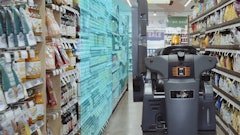
I often hear retailers claim that the biggest challenges they face include getting the most value from massive amounts of data, fixing known inefficiencies (and finding those they don’t know exist), and addressing gaps in their true understanding of the consumer. Often, the central reason for these problems is that most supply chains stand on a make-shift foundation of disconnected or loosely connected solutions. In fact, only 36% of supply chain professionals say their organization operates on a single supply chain platform. It’s no wonder things aren’t working well; it’s because systems, processes and people aren’t working together.
Technology should enable speed and agility, especially in the supply chain, but investing for the sake of shiny new tools isn’t the answer if you don’t have a good foundation to begin with. Many grocery retailers today are using solutions they’ve cherry-picked to serve various parts of the supply chain, or their planning activities take place within several convoluted Excel spreadsheets.
These supply chain approaches do not provide the vision, foresight and automation needed to be competitive in the market, and a lack of systems—or disparate ones at best—create costly disconnects. Using data as their competitive advantage, grocery retailers can achieve supply chain synchronization, but only if they seek to understand the disconnects that they’re up against in the first place.
Piecemeal Supply Chains Aren’t Fit for the Future
The evolution of retail technology has, ironically, contributed a great deal to demand planning disconnects. As new capabilities evolve, new vendors emerge in the market, offering an answer to a single business issue. Retailers often make investments and deploy technology that finally solves a long-overdue problem. Similarly, retailers also customize their legacy technology over time, only to realize that these time-consuming projects have already been proven obsolete, and what’s worse, that they operate in silos.
In their dissatisfaction, they decide to implement new technology to patch the holes, and the cycle continues. Ultimately, retailers look up from their work and realize they have multiple systems purchased over time that address the same business process.
Instead, they would be far better off prioritizing system harmony built around a common platform that unites each link in the chain.
Retailers on to Appreciate New Variables in the Demand Forecast
Supply chains keep things moving, and that forward momentum is fueled by a mountain of data. But even the scale of historical sales data doesn’t allow retailers to generate a holistic understanding of who the consumer is, how they shop and what motivates them. They must also use contextual data, such as weather and local events, to effectively forecast demand.
However, as market conditions evolve broadly, the demand planning systems that can handle new demands for fresh and ready-made foods, for example, are often not tied to those for the center store—this leaves retailers with a partial understanding of demand. Nuances in the grocery industry require the capability to navigate any shift in consumer behavior along with any future industry disruption.
Inventory Visibility Shouldn’t be a Guessing Game
All of these gaps and processes lead to inaccuracy in forecasting. With this in mind, one costly disconnect is the reality of “anyone’s guess” levels of inventory. Retailers lack complete visibility into what is available and where inventory is located as it moves through the supply chain, and as such, replenishment is based on inaccurate numbers.
Without a unified view of consumers and demand cycles, retailers are consistently met with forecast errors, shrink and margin erosion, plus customer dissatisfaction because poor forecasting leads to product unavailability. Ideally, all processes in the supply chain work together to harmonize demand forecasting, replenishment, allocation and order fulfillment. But retailers don’t have a top-down, bottom-up approach to replenishment, which leads to siloed allocation efforts.
Achieving Supply Chain Alignment Through the Power of AI
If retailers are struggling to execute because they are faced with too many decisions, or they continually run up against forecast errors and out-of-stocks, the focus to prioritize is aligning all supply chain processes on one singular platform, especially if that ecosystem is infused with artificial intelligence. With AI-enhanced supply chains, retailers have one point of visibility into the health of the business. The data is fluid throughout all supply chain solutions, eliminating duplicative work because all roles are working together in sync, from one version of the “truth” that the data tells.
The unpredictable customer behavior of today, paired with changes in demand, means that things are not as predictable in retail as they once were. AI recognizes trends and anomalies in demand patterns that would go unnoticed by traditional forecasting methods. Because of these next-generation capabilities, a retail supply chain evolves and adapts to new realities, new channels and new products in assortment. AI provides an in-tune awareness, unique to each and every retailer, enabling them to meet their strategic goals.
The “future-proof” supply chain grocery retailers should be building is one that can learn and predict customer demand by category, product and channel. It is connected, cohesive and autonomous. It is an AI-powered supply chain operating on a single, unified platform in which each link supports and strengthens the others. It will streamline and automate the decision-making process to better support replenishment planning strategies, minimizing errors, reducing cost and speeding up time-to-shelf. Infusing AI throughout the supply chain is key to achieving supply chain resiliency.





















